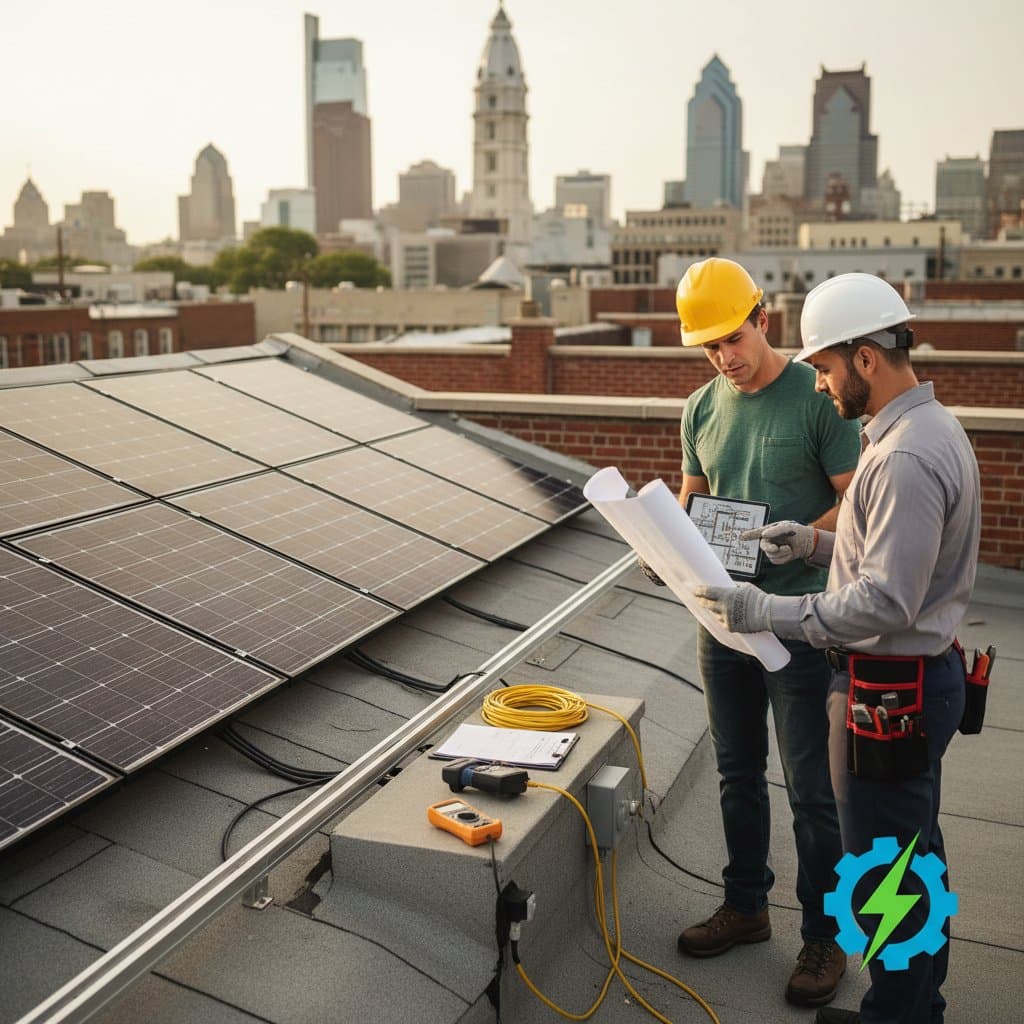Understanding DIY Solar Regulations in Philadelphia
Homeowners in Philadelphia increasingly pursue do-it-yourself solar installations to reduce energy costs and achieve greater self-sufficiency. These projects promise lower utility bills and sustainable power generation. However, the process involves navigating complex electrical interconnections, structural modifications, and adherence to local building codes. Failure to comply can result in voided warranties, substantial fines, or hazardous conditions that endanger lives and property. This guide outlines the permissible scope of DIY work, essential safety measures, and the value of professional involvement to help you proceed confidently.
Philadelphia's Department of Licenses and Inspections oversees solar permits, requiring submissions for any system that alters electrical service or building structure. DIY efforts must align with the National Electrical Code as adopted locally, including Article 690 for photovoltaic systems. Always verify current requirements, as updates occur periodically to enhance safety and efficiency.
Identifying Tasks Requiring Professional Expertise
DIY solar projects allow for certain preparatory and low-risk activities, such as site planning, panel positioning, and basic mounting on existing roofs. These steps enable cost savings without immediate regulatory hurdles. The transition to grid-tied electrical work, however, mandates intervention by a licensed electrician to prevent risks like overloads or shocks.
Engage a licensed electrician for these critical tasks:
- Installation or alteration of breakers within the main service panel
- Upgrades to the service entrance conductor or meter base
- Integration with existing branch circuits or subpanels
- Systems involving aluminum wiring, degraded connections, or ambiguous labeling
- Verification of grounding integrity using specialized multimeters
Electrical errors in solar setups frequently lead to arcing faults, potential fires, or premature component failure. Professionals apply precise torque to connections per manufacturer guidelines, confirm polarity alignment, and ensure robust bonding. Prior to any handling, employ a non-contact voltage tester to detect energized lines and mitigate shock risks.
Core Safety Protocols for DIY Solar Work
Solar photovoltaic panels generate direct current electricity under any illumination, rendering conductors potentially hazardous at all times. Disconnecting the array from the inverter alone fails to de-energize the panels fully. Treat all wiring and modules with the utmost caution to avoid injury or system damage.
Acquire and utilize this essential safety equipment:
- Insulated gloves certified for at least 1000 volts of protection
- Reliable non-contact voltage detectors for live circuit identification
- Precision torque screwdrivers to secure terminals without over-tightening
- Ground-fault circuit interrupters integrated into the DC side
- Readily accessible, rated disconnect switches positioned near the utility connection point
Select components explicitly listed for photovoltaic applications by recognized testing laboratories. Opt for copper wiring in most cases, or consult a design engineer for aluminum systems equipped with CO/ALR-rated terminals. Adhere strictly to code-mandated calculations for conduit capacity, conductor sizing, and adjustments for ambient temperatures. Selecting appropriately oversized wires minimizes voltage drops, thereby enhancing overall system performance and longevity.
Evaluating Costs: DIY Approaches Versus Professional Services
Initial assessments often portray DIY solar as a budget-friendly option, with online panel kits and eliminated labor fees appearing economical. In practice, unforeseen expenses frequently erode these advantages. Structural assessments, permitting processes, and corrective actions after inspections represent common overlooked outlays.
Account for these typical additional expenses in DIY projects:
- Professional engineering evaluations for roof load-bearing capacity
- Fees associated with permit applications and mandatory inspections
- Investments in specialized tools and personal protective equipment
- Necessary upgrades to electrical service infrastructure
- Labor and materials for revisions following inspection failures
Professional installers benefit from bulk purchasing discounts, streamlined warranty claims, and expertise in incentive programs. Philadelphia offers rebates and federal tax credits that typically require certification from licensed contractors. Factoring in these financial perks, professionally installed systems often achieve payback periods shorter than those of unassisted DIY efforts, while delivering superior reliability.
Strategies to Optimize Savings and System Durability
The financial returns from solar installations hinge on consistent energy production, reduced operational interruptions, and extended equipment lifespan. Proper execution of wiring, grounding, and inverter setup plays a pivotal role in these outcomes. Substandard installations accelerate degradation through issues such as thermal stress or moisture penetration, diminishing returns over time.
Implement these maintenance practices to sustain efficiency:
- Perform biannual cleaning of panels using soft brushes and deionized water to remove debris
- Cross-reference inverter output data with dedicated monitoring software for accuracy
- Inspect exposed wiring quarterly for signs of ultraviolet degradation or insecure fastenings
- Arrange biennial professional inspections to re-torque connections and assess overall integrity
Regular upkeep not only preserves performance but also upholds compliance with ongoing code standards. By prioritizing these habits, homeowners extend the operational life of their systems, amplifying cumulative savings well into the future.
Practical Actions for Launching Your Solar Project
Embark on your DIY solar journey with these structured steps to ensure regulatory alignment and safety.
- Consult the Philadelphia Department of Licenses and Inspections to obtain tailored permit advice and application forms.
- Secure a comprehensive site assessment from a licensed electrician or NABCEP-certified solar professional.
- Source materials certified for photovoltaic use and adhere to all specified torque values from manufacturers.
- Maintain a dedicated file containing installation logs, inspection reports, and compliance documentation.
- Establish a routine schedule for professional maintenance to validate continued safe and efficient operation.
Responsible DIY solar initiatives in Philadelphia yield impressive energy independence and cost reductions. Adhering to permit stipulations, incorporating expert assistance for electrical components, and maintaining meticulous records positions your project for enduring success and peace of mind.
